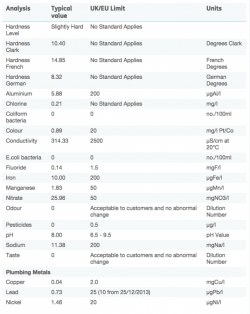Yes, we need to know the GH, but while we're waiting for that... and by the way, you can likely get the GH from your municipal water authority, on their website, or call them. GH is general hardness, and it would be good to know the KH (carbonate hardness, or Alkalinity) as well. These are connected to pH. No need to get test kits, you may never use them again.
To the algae. Algae is perfectly normal and to be expected in an aquarium. All it needs is light and nutrients, and the fish provide plenty of the latter. Those of us with live plants try to keep the light and nutrients in balance so the plants use this and algae is at a disadvantage. Without live plants, algae is going to occur, and this is natural. Some algae can be attractive, and it does provide a useful purpose similar to plants, namely using nutrients and producing oxygen. But I agree that too much of it, or the wrong type, is rather ugly and can be a sign of other problems too.
Algae is controlled by light and nutrients. Reducing the light can help, up to a point, and with respect to the nutrients you want to ensure the fish load is suited to the tank/water space, they are3 not overfed, the substrate is vacuumed at every water change, and the water change is regular (no less than once a week, and half the tank volume is advisable). Algae will still appear as I said, but it should be more under control. There is no such thing as a tank with no algae (regardless of those photos one sees), as such a tank is not really healthy.
On the light, it is best to have a regular period of tank lighting during each 24 hours, along with a period of complete darkness. This is important for the fish. It doesn't matter when the "light" period is, and when you are normally home to view the aquarium is best. A lamp timer is handy to achieve a regular period, and the fish will be better.
Another thing is that you do not want to be taking out the rocks and cleaning them. The surfaces under water develop a biofilm which is essential for many types of bacteria. This aufwuchs [German for surface growth] will attract algae and microscopic critters that serve as a food source; this is why you can see many fish picking over surfaces. You don't want to be keeping things so spotlessly clean. However, not all algae or similar is good. If one had cyanobacteria for instance, this is not good and needs to be addressed.
Here is a site with photos of algae; can you find one that appears to be what you have?
H'm, the site link won't copy over for some reason...??
Byron.

 Maybe otos, if you have peaceful fish.
Maybe otos, if you have peaceful fish.

 /www.aquaticscape.com/articles/algae.htm
/www.aquaticscape.com/articles/algae.htm